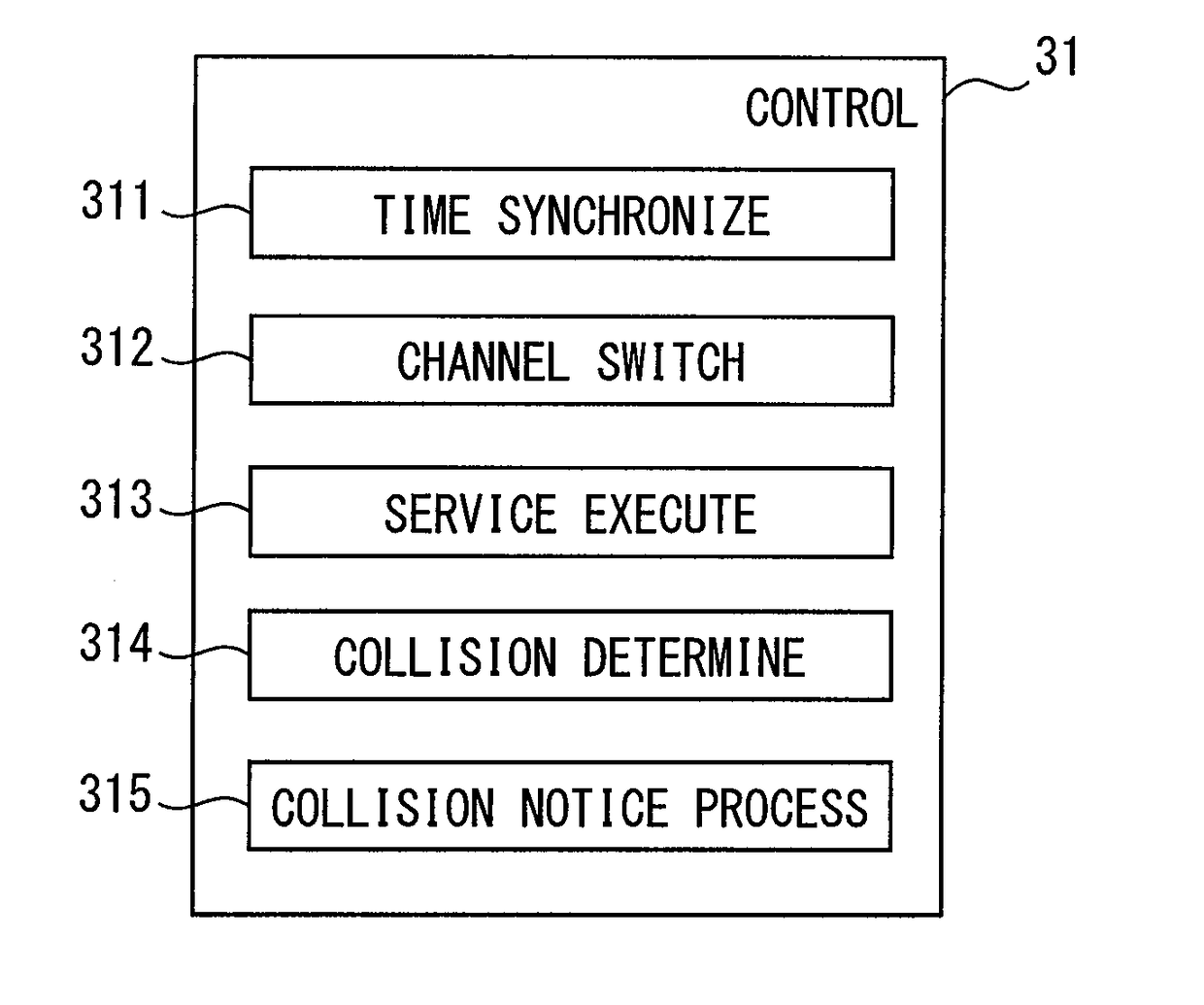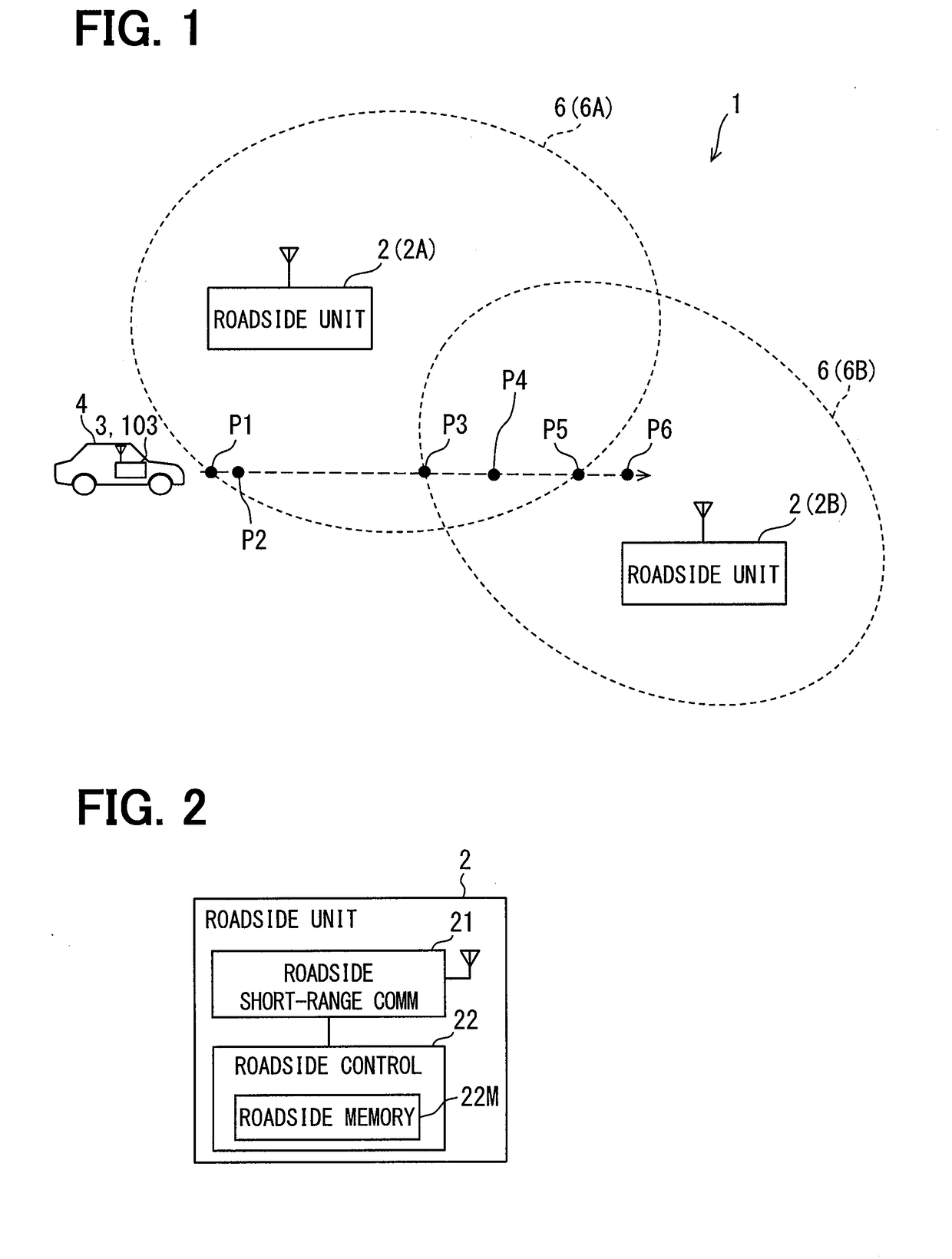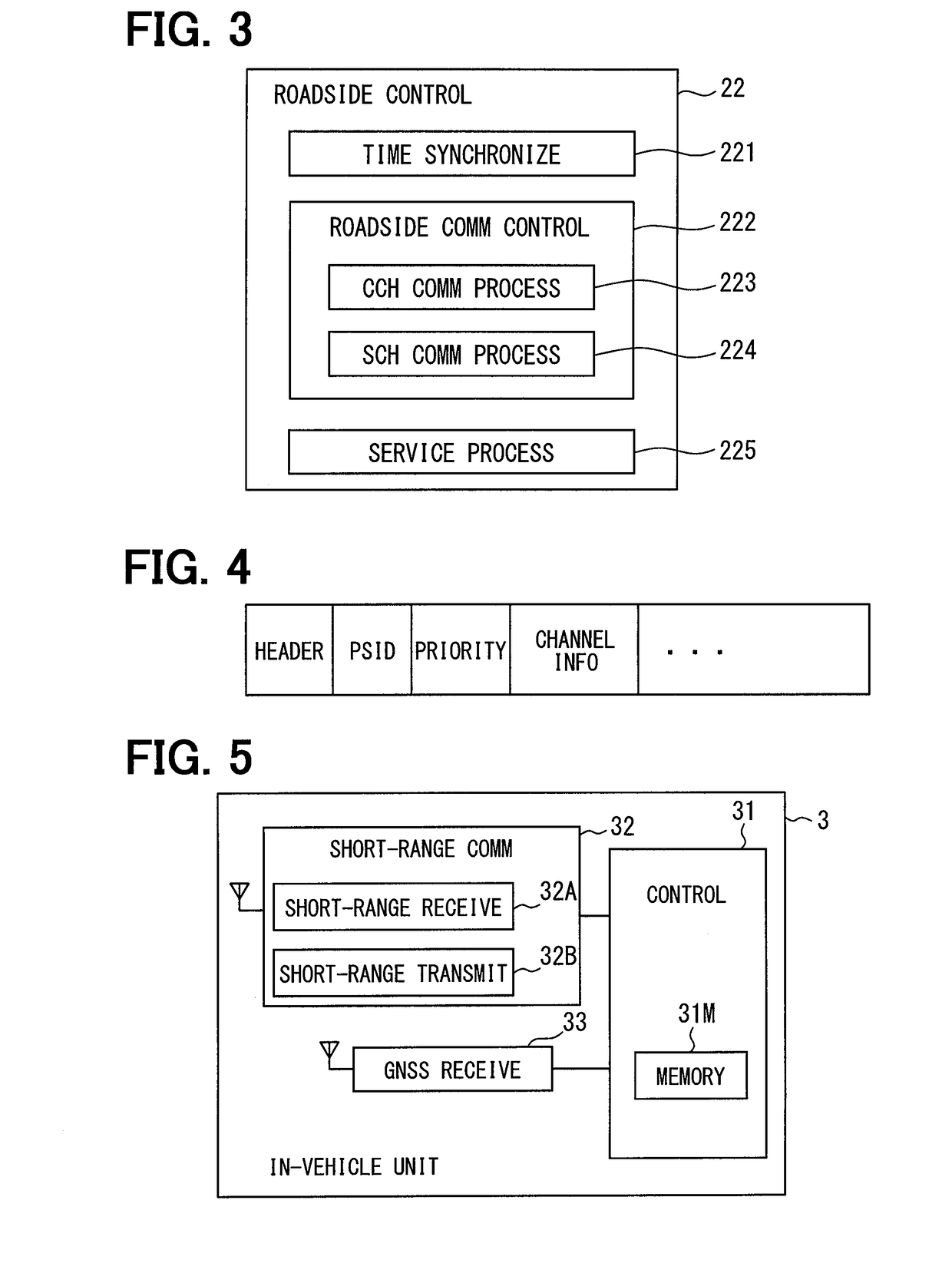Wireless communication apparatus
a communication apparatus and wireless technology, applied in the direction of network traffic/resource management, vehicle components, location information based services, etc., can solve the problems of collision of two wsa(s) and failure to avoid signals using csma/ca technology
- Summary
- Abstract
- Description
- Claims
- Application Information
AI Technical Summary
Benefits of technology
Problems solved by technology
Method used
Image
Examples
first embodiment
[0037]The following describes embodiments of the present disclosure with reference to drawings. As illustrated in FIG. 1, a wireless communication system 1 according to a first embodiment includes a roadside unit 2 and an in-vehicle unit 3. FIG. 1 also illustrates an in-vehicle unit 103 according to a second embodiment. The in-vehicle units 3 and 103 each are equivalent to a wireless communication apparatus; the roadside unit 2 is equivalent to a service provider station.
[0038][Outline Configuration of Wireless Communication System 1]
[0039]FIG. 1 illustrates two roadside units 2A and 2B; however, the number of roadside units 2 may be equal to or greater than three. When not distinguishing the roadside units 2A and 2B from each other, each is represented as a roadside unit 2. In addition, a single in-vehicle unit 3 mounted in a vehicle 4 (also referred to as a host vehicle 4) is illustrated in FIG. 1; however, it may be any one of a plurality of in-vehicle units 3 individually mounte...
second embodiment
[0106]The following explains a second embodiment. In the explanation of the second embodiment, an element may be assigned with the reference number identical to that of the element explained in the first embodiment, unless otherwise specifically described. When only part of the configuration of the second embodiment is explained, the other part of the configuration may adopt those of the first embodiment previously explained.
[0107]FIG. 10 illustrates a service provision system 101 in a wireless communication system according to a second embodiment. The service provision system 101 includes a roadside unit 102 and a management apparatus 105.
[0108]The roadside unit 102 includes a wide-range communicator 123 in addition to the same configuration as that of the roadside unit 2 according to the first embodiment. The wide-range communicator 123 is connected to a wide range wireless communication network to communicate with other apparatuses connected to the wide range communication networ...
third embodiment
[0145]According to a third embodiment, the in-vehicle unit 203 includes a failure determiner section 316 (also referred to as a failure determiner 316) as illustrated in FIG. 15. The other configuration is the same as that of the in-vehicle unit 3 according to the first embodiment.
[0146]The failure determiner section 316 determines whether the short-range receiver 32A is in a failed state or out of order based on an error ratio (hereinafter, a reception error ratio) of a reception signal which the short-range receiver 32A receives. In detail, the failure determiner section 316 acquires successively the current position which the GNSS receiver 33 calculates, and a travel distance d of the in-vehicle unit 3 successively based on the change in the current positions. Note that the current positions, which are the information for calculating a travel distance d, are equivalent to the travel distance information; the GNSS receiver 33 is equivalent to a travel distance information detector...
PUM
 Login to View More
Login to View More Abstract
Description
Claims
Application Information
 Login to View More
Login to View More - R&D
- Intellectual Property
- Life Sciences
- Materials
- Tech Scout
- Unparalleled Data Quality
- Higher Quality Content
- 60% Fewer Hallucinations
Browse by: Latest US Patents, China's latest patents, Technical Efficacy Thesaurus, Application Domain, Technology Topic, Popular Technical Reports.
© 2025 PatSnap. All rights reserved.Legal|Privacy policy|Modern Slavery Act Transparency Statement|Sitemap|About US| Contact US: help@patsnap.com



